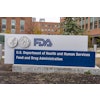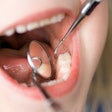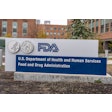Fluoride opponents released emails showing an alleged "too-close relationship" among members of the U.S. Centers for Disease Control and Prevention's (CDC) Division of Oral Health, the ADA, and the Pew Foundation.
"It appears they protect fluoridation while dismissing, insulting, and marginalizing those who raise valid health concerns," the New York State Coalition Opposed to Fluoridation (NYSCOF) said in a press release.
"It's interesting to learn how closely the ADA, CDC, and Pew are monitoring what NYSCOF and other groups who oppose fluoridation are doing and writing instead of allowing us to attend their meetings or participate directly in their email discussions," said NYSCOF President Paul Beeber.
In 2011, officials from the U.S. Department of Health and Human Services (HHS) proposed that the recommended level of fluoride in drinking water be set at the lowest end of the current optimal range to prevent tooth decay.
"One of water fluoridation's biggest advantages is that it benefits all residents of a community -- at home, work, school, or play," HHS Assistant Secretary for Health Howard Koh, MD, MPH, said in the 2011 statement. "And fluoridation's effectiveness in preventing tooth decay is not limited to children but extends throughout life, resulting in improved oral health."
However, Pew's William Maas, a former director of CDC's Oral Health Division, said, "There is a lot of uncertainty," regarding fluoride's effects to kidney patients in a May 2011 email to ADA Director of Congressional Affairs Judith Sherman, a registered ADA lobbyist.
Included on the email is William Bailey, then acting director of CDC's Oral Health Division, who replied: "End stage renal disease may be another issue. Since the body excretes fluoride through the kidneys, it is reasonable to assume that people with end stage [renal] disease may experience a buildup of fluoride," according to the NYSCOF press release.



















